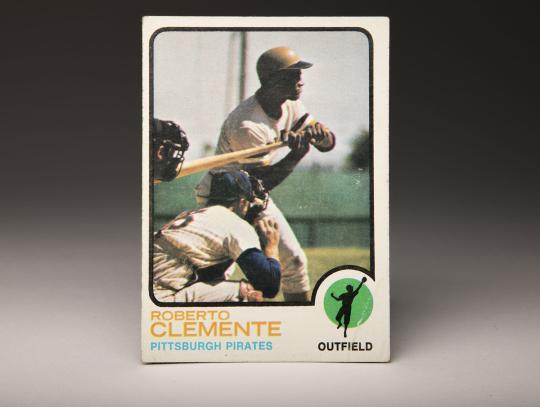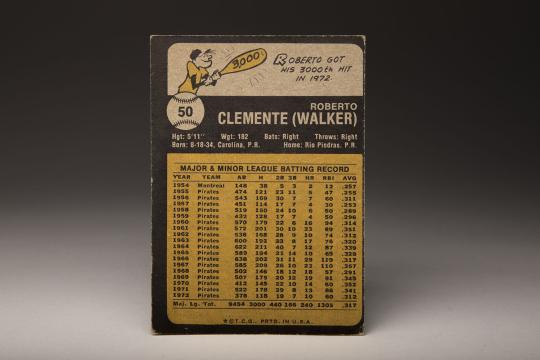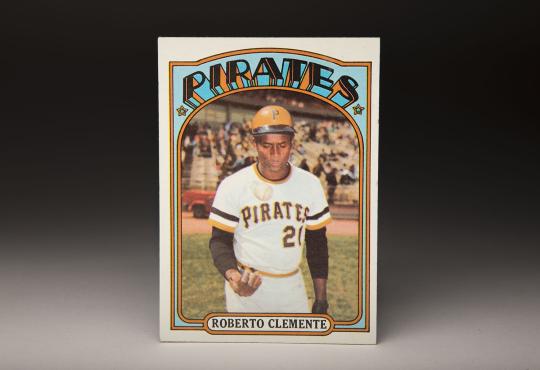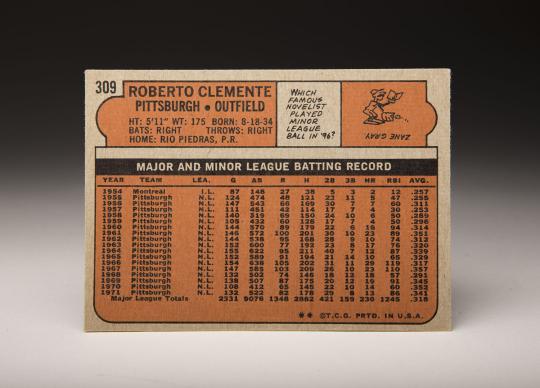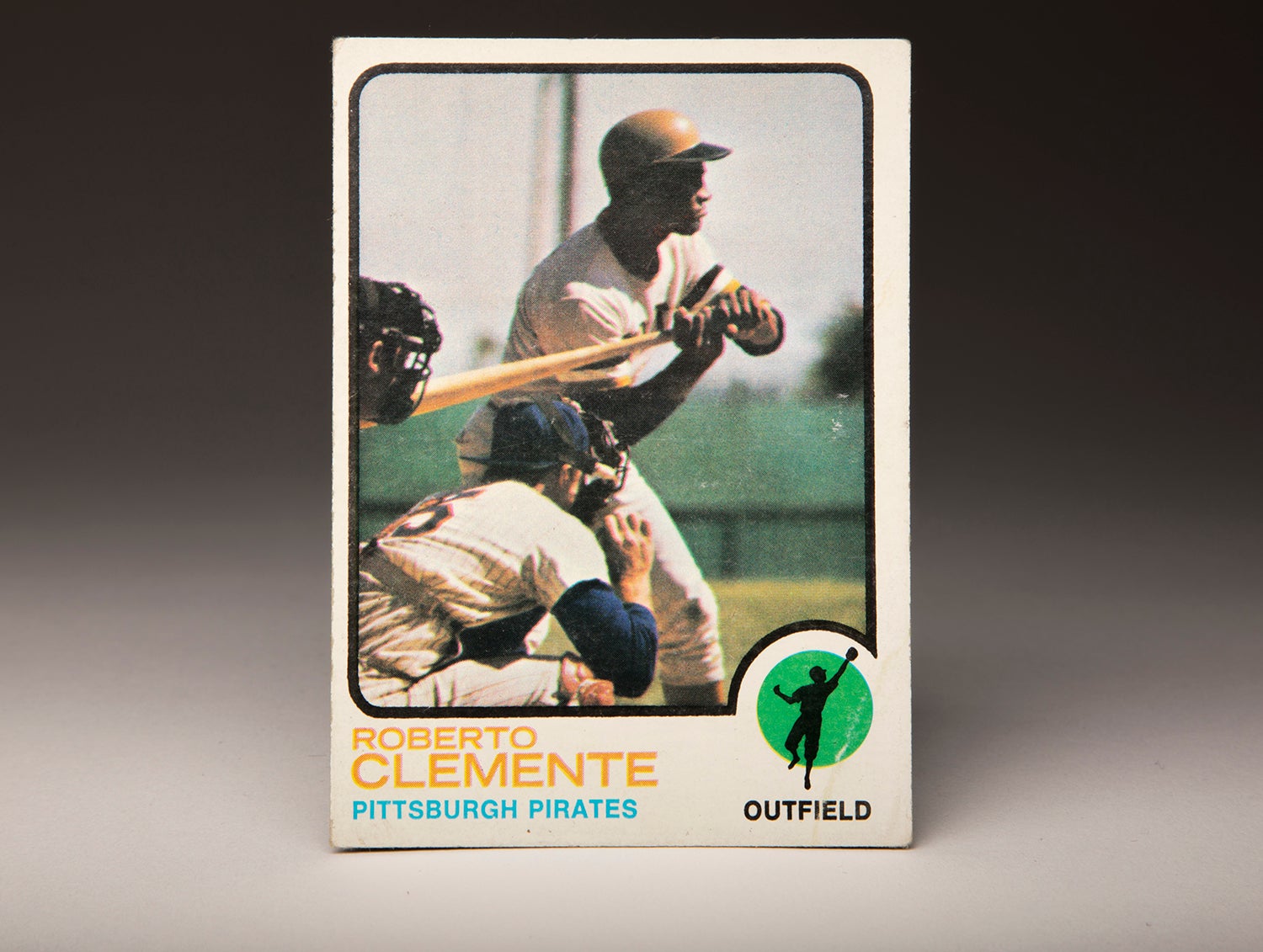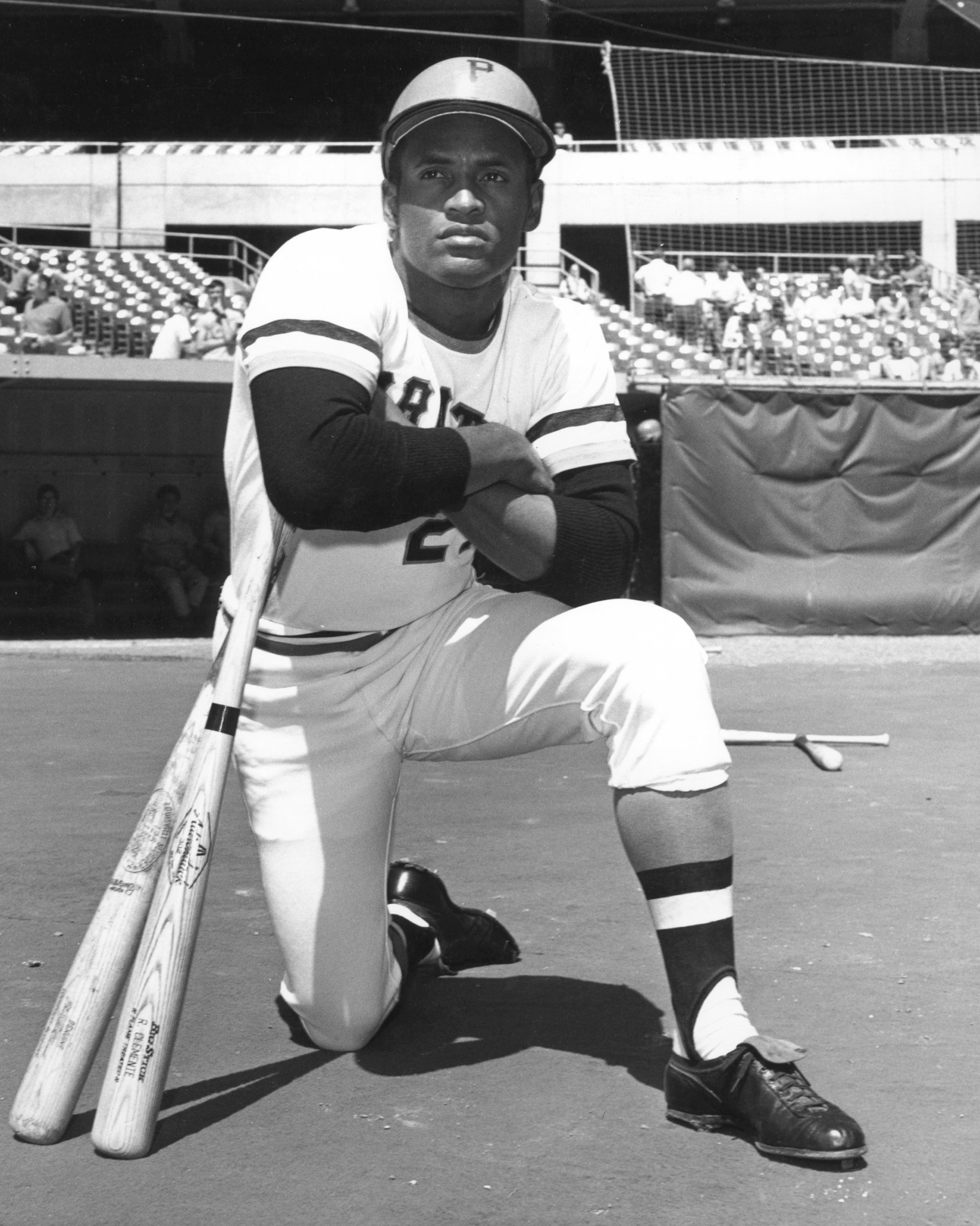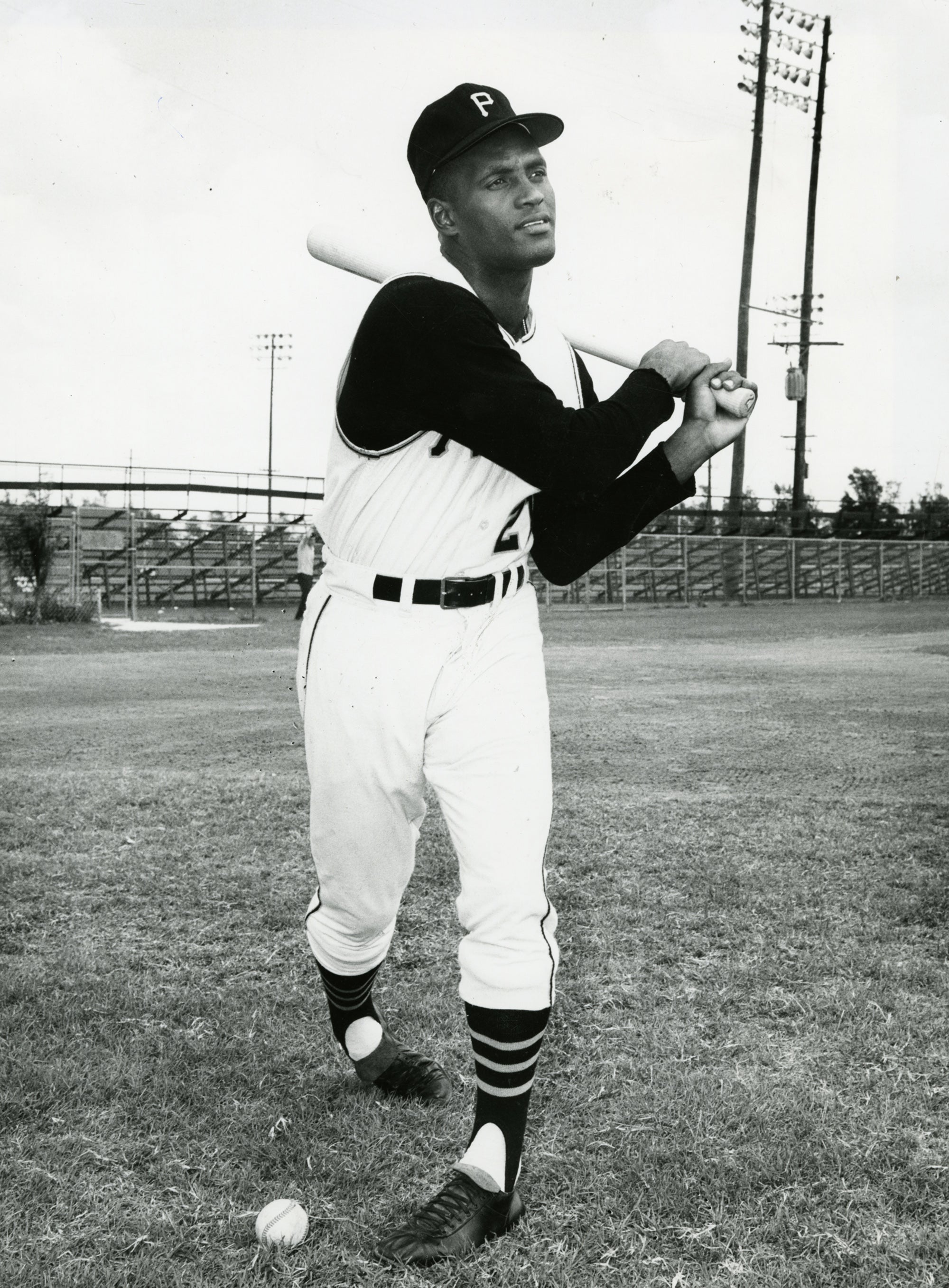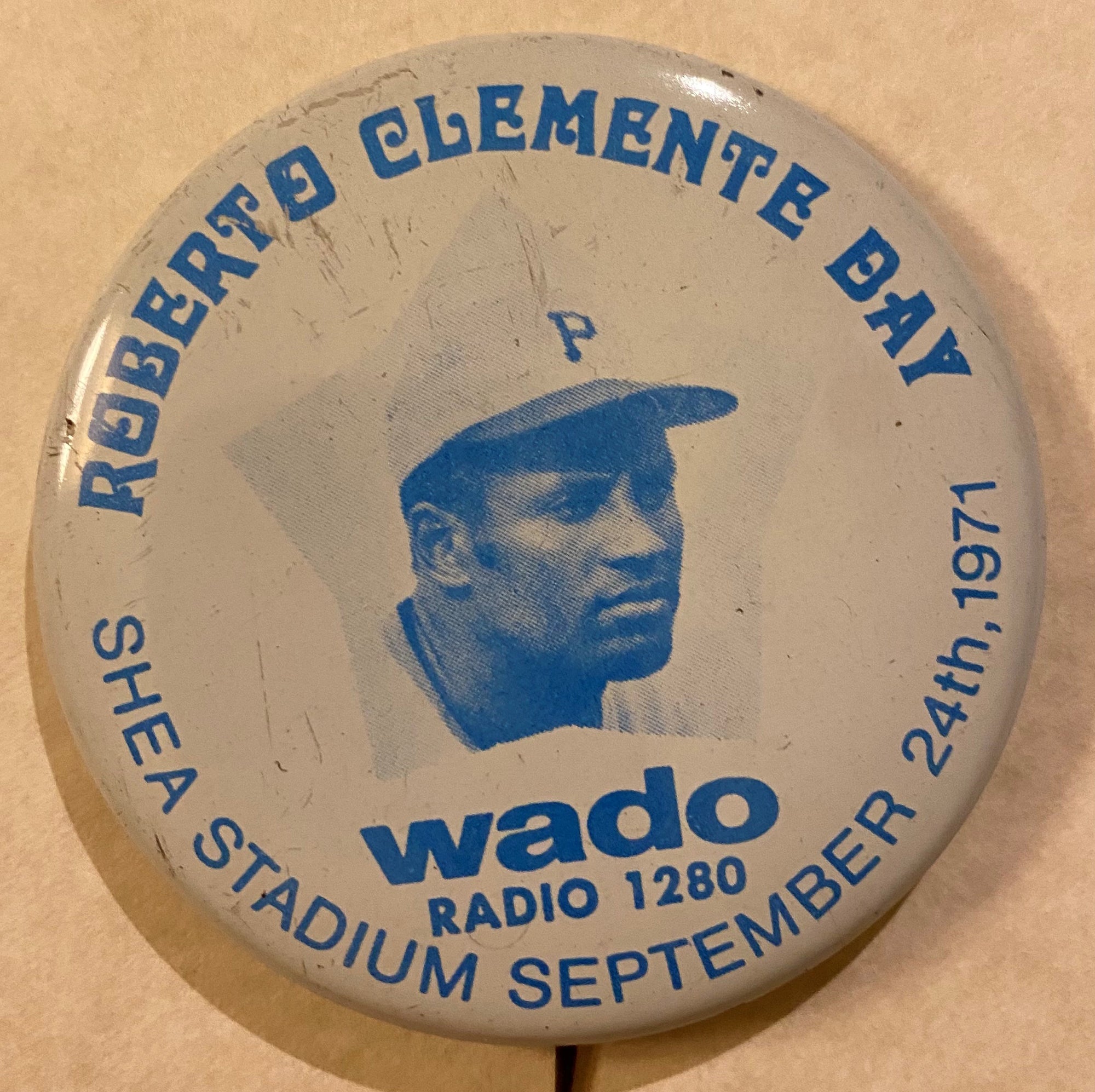- Home
- Our Stories
- Clemente’s legacy captured by timeless Topps cards
Clemente’s legacy captured by timeless Topps cards
Roberto Clemente’s playing career almost completely coincided with Topps’ early years as a producer of baseball cards.
Topps’ first successful set of cards came out in 1952; Clemente would soon follow, beginning his major league career in 1955 after the Pittsburgh Pirates drafted him from the Brooklyn Dodgers’ organization. The span of Clemente’s cards give us a good sense of how Topps cards changed from the mid-1950s to the early 1970s.
As a fan of Clemente, the question sometimes comes up: What is your favorite card of Roberto Clemente? There are certainly a lot to choose from, starting with his base cards and continuing with World Series cards, action cards and combination cards.
To narrow it down, my choice for a favorite would be one of two Clemente cards. One was issued late in his career. The other was not released until after his tragic death at the age of 38.
Pirates Gear
Represent the all-time greats and know your purchase plays a part in preserving baseball history.
Hall of Fame Membership
There is no simpler, and more essential, way to demonstrate your support than to sign on as a Museum Member.
Let’s begin with Clemente’s 1973 Topps card. It is one of only two times that Topps captured him with an action shot during his career. (The other time was his 1972 “In Action” card, in which Clemente can be seen rolling his neck during an at-bat at San Francisco’s Candlestick Park. Action shots on cards were simply not that prevalent at the time, certainly not the way they are with today’s cards.)
In the 1973 shot, we see Clemente from the side, holding his bat as he stands in the batter’s box, awaiting the next pitch from an unknown pitcher for the New York Mets.
At first, I thought that the photo must have been snapped during a 1972 regular season game at Shea Stadium, but then I realized that the background did not match the ballpark at all. The green outfield wall, which appears somewhat blurry in the background, is not the wall from Shea Stadium. No, this was a photo that must have been taken during a sunny Spring Training day in 1972, at Al Lang Field, the Mets’ site in St. Petersburg, Fla. The Mets’ pinstriped home uniforms are clearly in evidence here, so this must be Al Lang Field, and not McKechnie Field, where the Pirates trained in Bradenton.
The next question involves the Mets’ catcher. It is none other than Jerry Grote, New York’s starting catcher from that era. The photo is typical Grote, who appears to be up on his haunches, intense as ever, as if this was a regular season game and not a meaningless exhibition game. In a way that is fitting; both Grote and Clemente played the game like it should be: All-out, all of the time. These two veterans took their jobs seriously, exhibition game or otherwise.
As a fan of Clemente, I was grateful to have the 1973 card showing him in a well-photographed action shot. Then again, the card also produces mixed feelings, due to the difficult circumstances under which it was produced by Topps. It was a card that Topps might not have produced at all, given the tragic events that happened on the final day of 1972.
The 1973 card first circulated in February of that year. (1973 marked the last year that Topps issued its cards in a staggered series, rather than all at once. As No. 50 in the set, the Clemente card would have been part of the first series, coming out in February.)
By the time the Clemente card first hit stores, he was already gone. Along with four others, the Hall of Fame right fielder had died in a plane crash on New Year’s Eve, while bravely trying to airlift relief supplies from Puerto Rico to earthquake-stricken Nicaragua.
It’s likely that when news of Clemente’s death reached the public, Topps had already produced his 1973 card. But with several weeks remaining before the new cards would be sent out to stores, Topps could have easily pulled the card. But Topps did not. Sy Berger, the president of the company, decided to keep the Clemente card and include it in 1973 distribution. Berger died in December of 2014, so we cannot ask him what his thought process was, but I imagine that he felt a final Topps card would be a fitting tribute for a beloved superstar.
Topps also had precedent on its side. In one of its late-series issues in 1964, Topps opted to include a card of Chicago Cubs second baseman Ken Hubbs, who had been killed in a February plane crash. Not only that, but Topps included a black band at the top of the card, featuring the words “In Memoriam.” Topps made it clear that it wanted to memorialize Hubbs, a slick-fielding infielder who seemed destined for a long career in Chicago.
For some reason, Topps opted not to include the words “In Memoriam” on the Clemente card, but by February, every baseball fan was fully aware of his death. In a sense, no one needed to be reminded of Clemente’s passing; it was something that we knew all too well.
At the time of the release of the Clemente card, I remember talking about it with friends in and out of school. We thought it was a little strange for Topps to produce a card for a deceased player, but we certainly were not offended by it. In fact, we liked the card, given that it was an attractive action shot of a fallen legend.
In the years since, I’ve thought longer about Topps’ decision and come to the following conclusion: Sy Berger was 100 percent right to include the card in the set. It served as a beautiful tribute, and it gave us one more look at Clemente in action, at a time when there was no Internet and when it was difficult to find action shots of such a dynamic and charismatic player.
As much as I love the 1973 Topps card, it will have to settle for second place on my personal list of favored Clemente cards. There is one that I cherish just a little bit more. It’s a card that came out one year earlier, when Clemente was still with us.
At the time that Topps released its 1972 set, there was no one cooler than Clemente. First, he was coming off his superhuman performance in the 1971 World Series, when it seemed that he single-handedly carried the Pirates to one of the largest upsets in October history. Second, Clemente always had a distinctive air about him; he was lean and muscular, handsome and graceful, yet steely and determined.
Clemente’s 1972 card reflects his hip demeanor and reputation. Looking relaxed before a 1971 road game (quite possibly at Shea Stadium), Clemente is seen casually flipping a ball into mid-air. When I first saw this card years ago, I did not actually notice the baseball within the frame of the photo. I initially thought that Clemente was merely gesturing with his right hand. But the ball is definitely there; it has been caught near its apex, as it is superimposed against the gray color of the Pirates’ uniforms, just above the name “Pirates.” We can only assume that Clemente, in fulfilling his coolness, catches the ball as it drops toward his palm.
Ever since noticing the ball in mid-air, I’ve wondered whether the photographer actually asked Clemente to flip the ball upward in such a manner. Perhaps he just decided to do something unusual for the photographer. Or maybe this was a candid shot, with Clemente unaware that the Topps cameraman was snapping his picture at that moment. After all, Clemente is not looking at the camera, but is intently staring at the ball. It’s hard to say with any certainty.
I suppose it doesn’t really matter. The effect remains the same. The card is all Clemente, all fashionable and groovy (to borrow from the vernacular of the time), and whenever his name is mentioned to me, this is invariably the first image of him that comes to mind.
It is Roberto Clemente, looking cool, casual and hip, as he almost always did.
Bruce Markusen is the manager of digital and outreach learning at the National Baseball Hall of Fame and Museum

